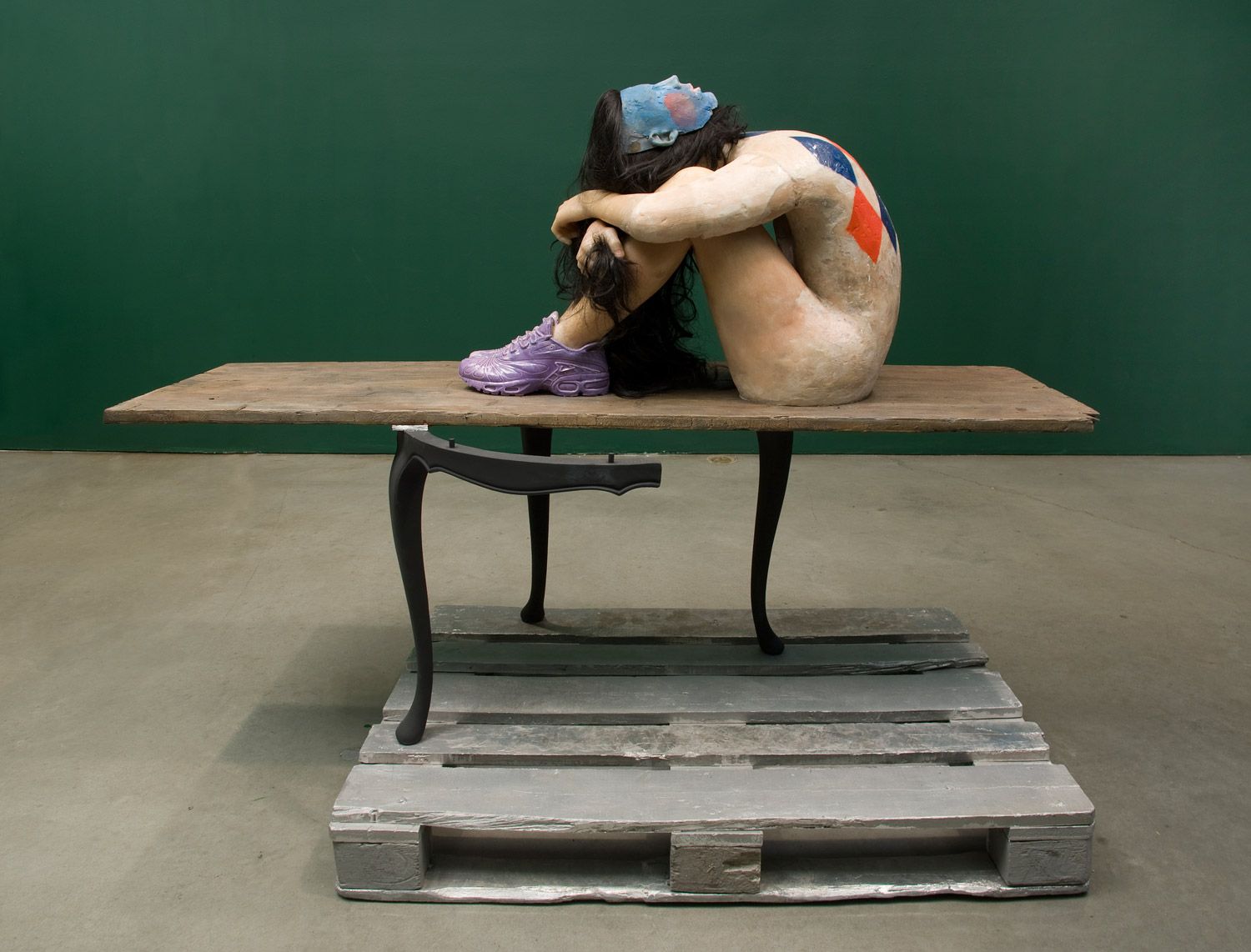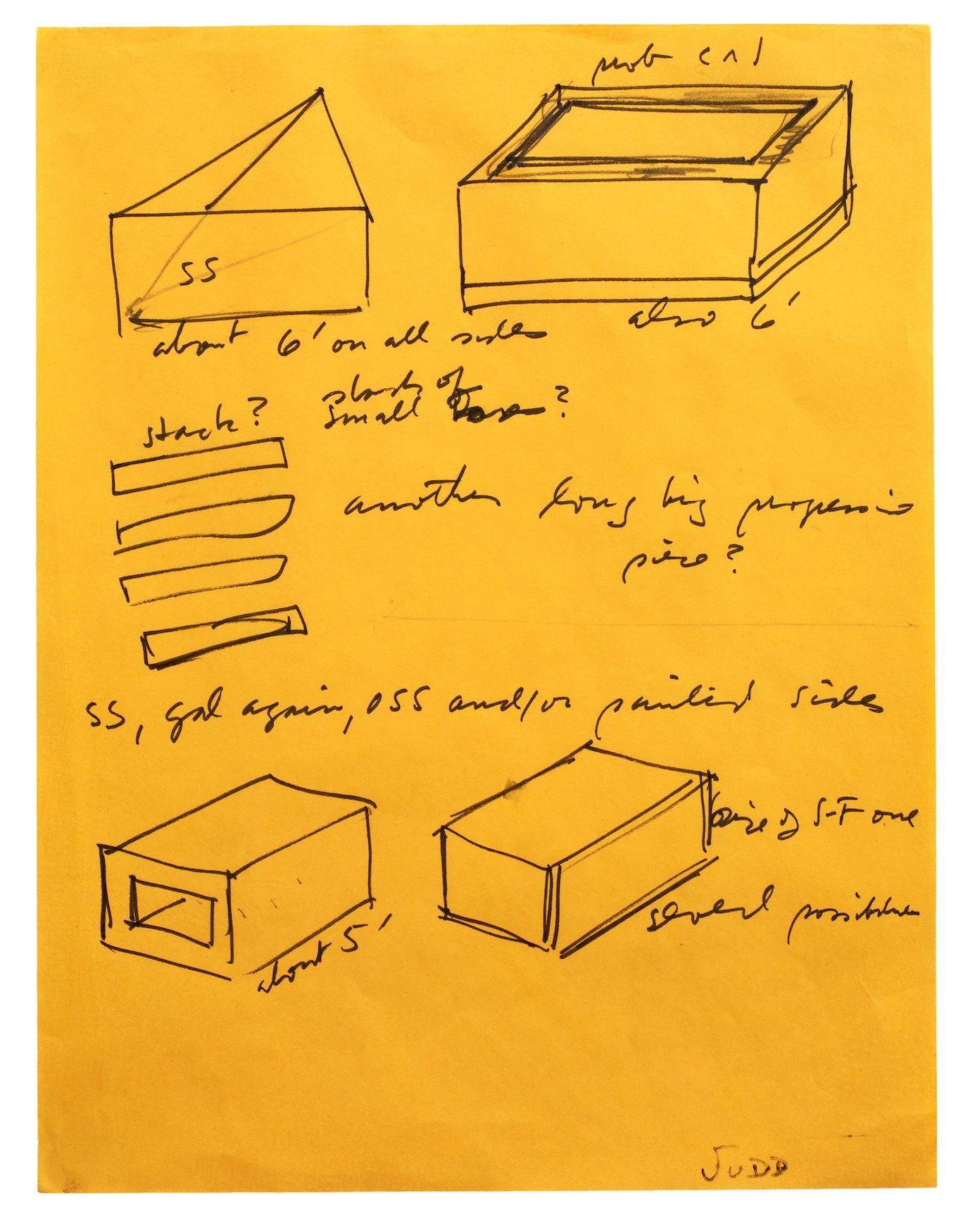Dark Matter: ANDRO WEKUA
|Thom Bettridge
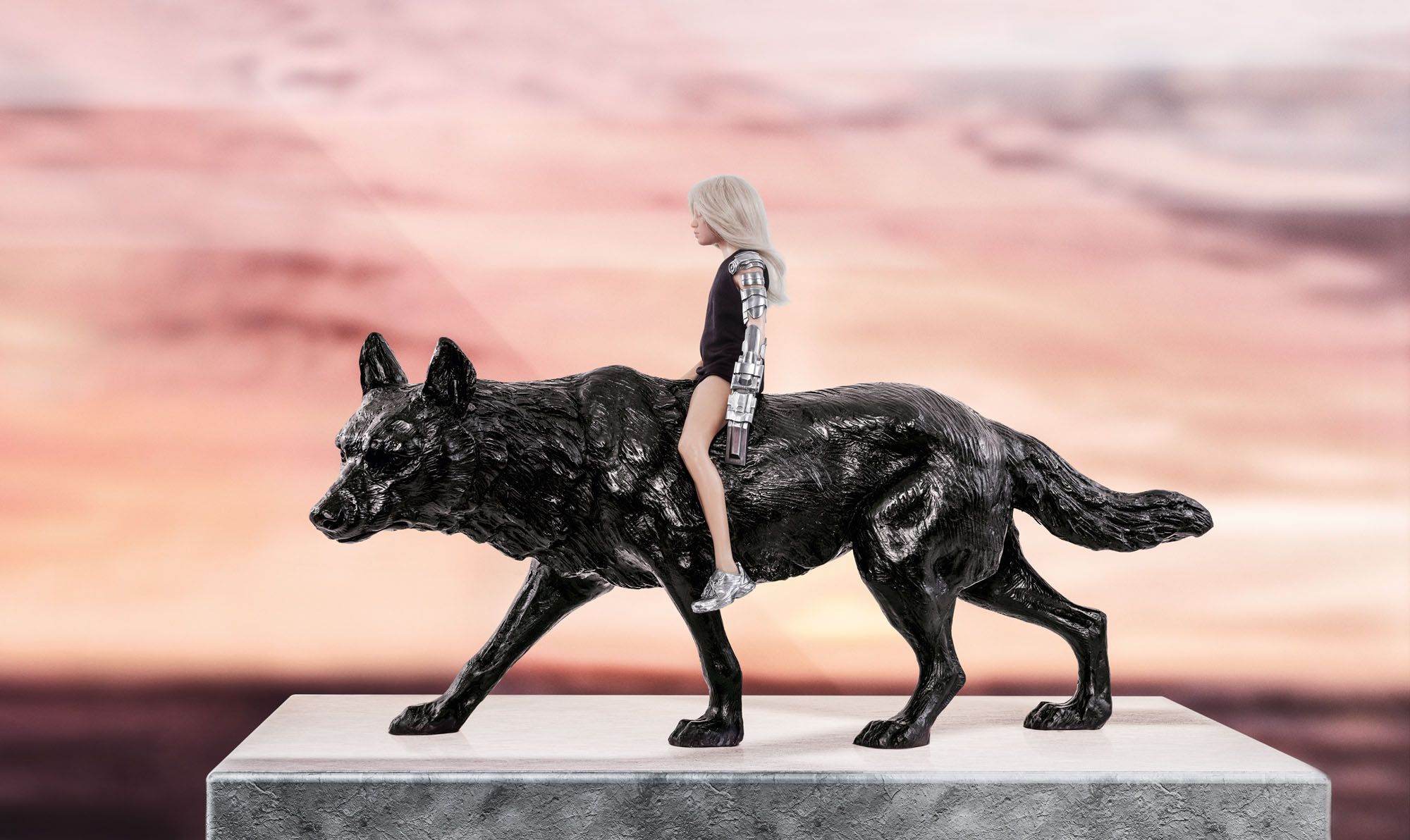
“I’m trusting you here alone,” ANDRO WEKUA’s assistant says, as she leaves me in the studio to go get coffee. Wekua, she tells me, is running late. I begin to wonder what type of trouble I could get into on my own in this space.
The sky outside is grey and it bathes the room in a milky silence. It looks like a movie set of “the artist’s studio,” a pitch-perfect platonic ideal – industrial, lots of natural light, sparse with wound-up patches of polychromatic clutter. Standing in the center of the room, I can see the River Spree out the windows to my right, and the parking lot of a Mercedes-Benz car dealership to my left. The balance of this space – its calibrated distance from the banal specifics of the outside world – feels fragile. This is a place where paintings are made, an introspective laboratory for an artist who trades in the byproducts of dreams and recollections.
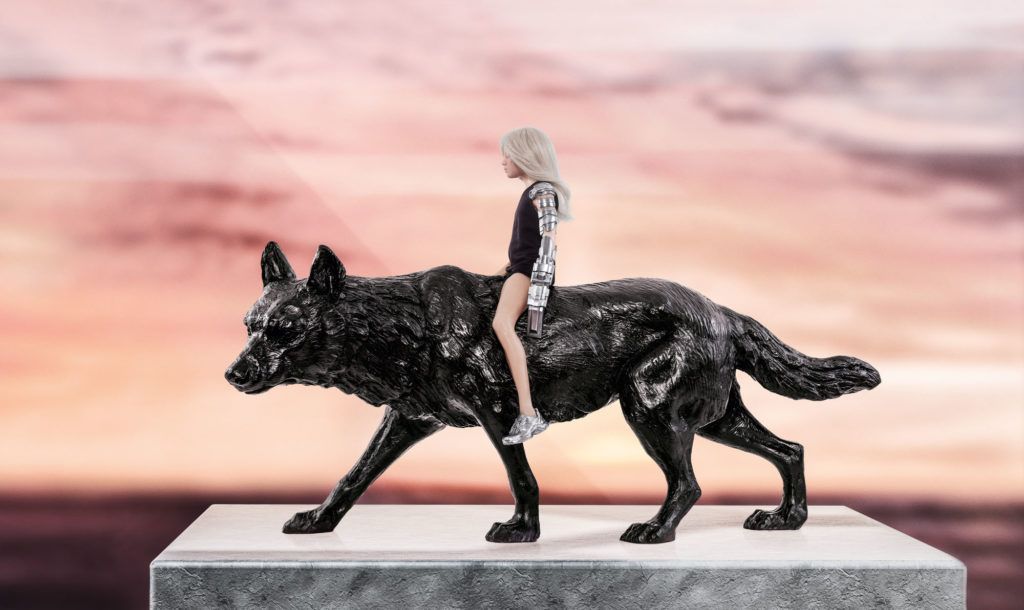
The paintings in the studio are hung on the wall in front of faint blast-radii of splattered paint in Wekua’s preferred color palette (blue, pink, purple, traces of yellow). These traces loom, blurred and watered down into mildewing sunsets. The paintings on the wall bounce sharply from this background, although it is difficult to tell which of them are finished. In installation shots of his work, Wekua’s paintings blend into the larger scheme of his artificial environments – hung as punctuation marks on brightly colored walls, or placed as stand-ins for the thoughts of his life-sized figures. Without their sculptural mise en scene, the paintings have a quality that suggests the 20th century – the blurry and partially redacted memories of Gerhard Richter’s painted photographs, the fragmented and disfigured forms of pre-war European modernism.
I try to recall things I’ve heard about Andro Wekua. A friend told me that he drives an Aston Martin, but that he keeps it in Zurich. Another friend told me that it was a Ferrari. He has been exhibiting internationally since his mid-twenties – through the circuits Kunsthallen in Switzerland and Germany, and at Gladstone Gallery in Chelsea. He was born in a wartorn region of the Caucasus, in what was once Georgia and is now Abkhazia. Reviews and catalogue essays about him have a reverential air, treating his work with a somber respect – as though he were very old, or already dead. Yet his career and personal itinerary do in fact seem to operate in a historical meta-atmosphere, a realm undented by any type of news cycle.
Wekua eventually arrives and invites me to take off my coat. He shuttles me over to a foam maquette of Sprüth Magers London, the gallery where his new show “SOME PHEASANTS IN SINGULARITY” is due to open in about a fortnight. As we continue speaking to each other, the screech of an industrial doorbell periodically slices through the calm in the studio, announcing deliverymen with newly-framed work. Paintings sealed in thick envelops of bubble wrap begin to slowly accumulate on the wall across from where we are sitting.
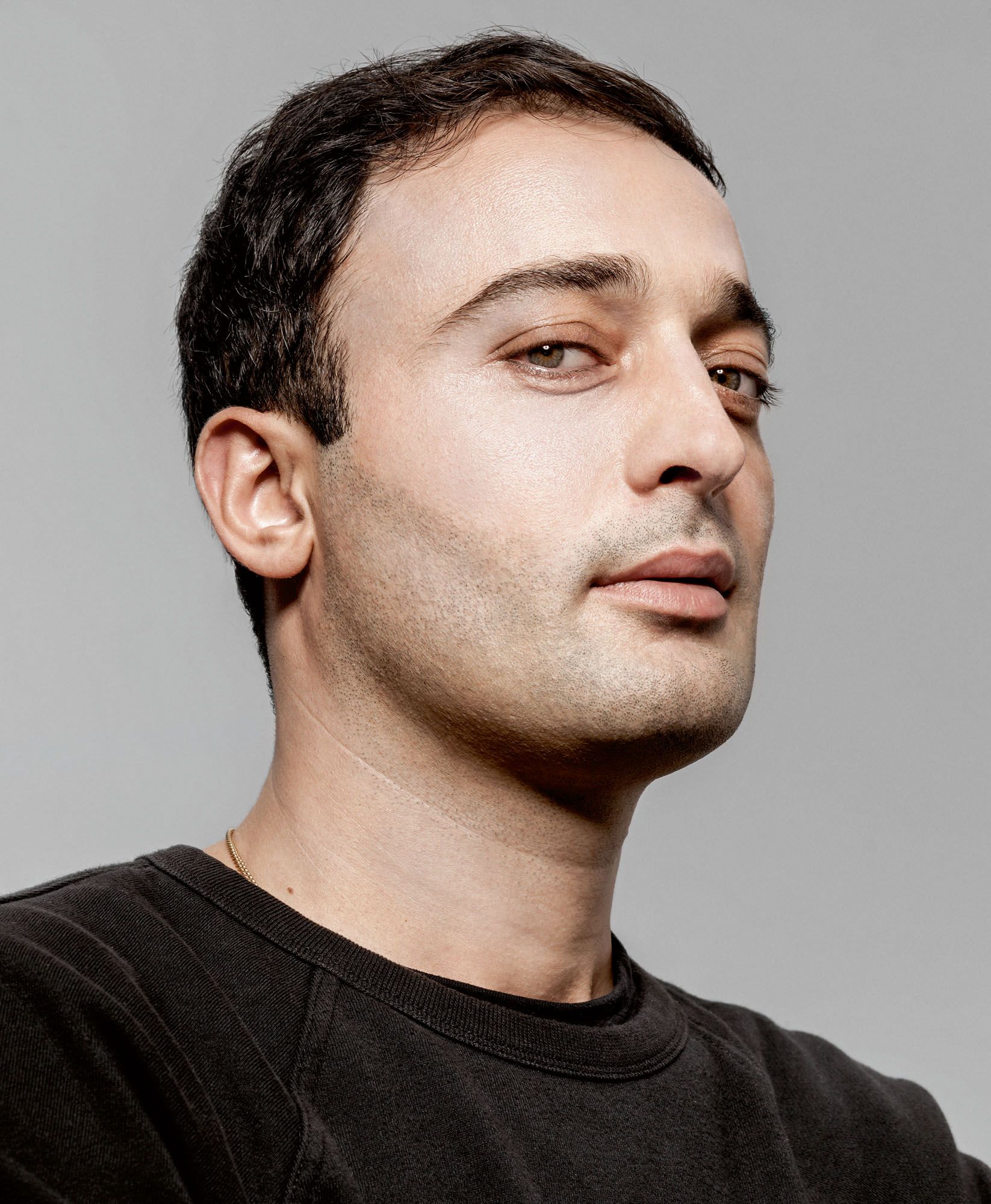
Wekua un-tapes a printout from the wall and hands it to me. It’s an exterior photo of the gallery in Mayfair, a black 19th century facade with “MONIKA SPRÜTH & PHILOMENE MAGERS” emblazoned on the frieze in gold letters. Its glass vitrine is massive and inviting, giving the impression of a shop that sells expensive jewelry.
“It’s a nice space. Very public, very open to the street,” I remark.
Wekua nods, but explains that he actually plans to build a cinder block wall in front of the window, “I don’t want my eye to go to the street outside. The window is not completely blocked, but – ”
He guides me back over to the maquette and uses two foam slats to show me where the wall would go. I imagine this brick barricade shielding Wekua’s art from the streets of London, picturing passersby on the sidewalk trying to peer around the small gaps in his citadel, nervously unsure about whether to enter. It is a gesture so brutal that it holds a strange sincerity. And it points to a larger reluctance. In an art context swayed by legibility, recognition value, and immediacy, Wekua steadfastly abstains from “statements.” And yet, despite this, his work is not quite sentimental, nor is it reactionary. Instead, it simply feeds off the unexplainable.
“Get Out of My Room”
As Andro Wekua and I speak, he dutifully inflates the tongues of his low-top Reebok Pumps. I ask him a series of questions about the meaning of his work, and he declines with a series of Glomar responses:
Why do images of dolphins often come up in your work?
I don’t know. There’s no particular reason.
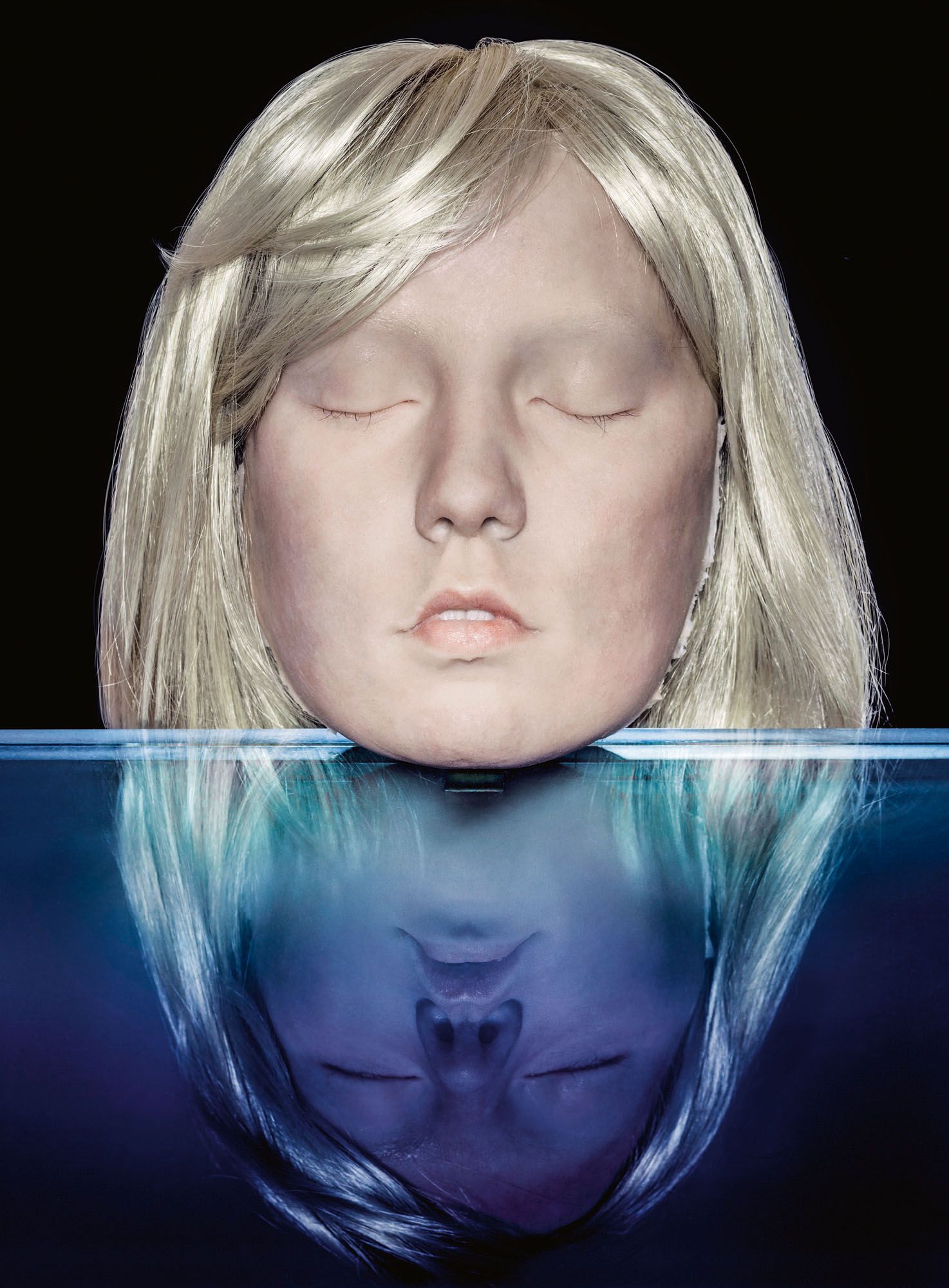
How do you approach making your sculptural figures – your mannequins? Do you look at them as characters?
I don’t know, they’re almost always the same age and somehow end up that way. When it’s done, I don’t have any connections. I just look at it.
Your new sculpture of a girl riding a wolf – how did that idea come about?
I don’t know how that stuff came together.
It has a fantasy-like scale –
There’s no direct reasoning. I feel like it’s just good to do. It’s kind of open. If I knew what I was doing, I wouldn’t do it.
Like the cinder block wall at Sprüth Magers, Wekua’s work has an opacity that eschews critical inquiry. It leaves areas of uncertainty, to the point where it doesn’t seem to be concerned about whether an audience will understand it. Despite this, its presence is tenaciously vivid, coalesced as sculptures that look live yet vaguely digital. “SOME PHEASANTS IN SINGULARITY” features two such sculptures, both depicting a young girl with blond hair and a bionic arm. They serve as a pair of contrasting scenes of empowerment and forced captivity. In one, the girl calmly rides atop a giant wolf, her posture nonplussed as she totes the menacing force of her metal limb. She gives the impression of an unlikely, contemporary war goddess – a character who looks like she could either be from Game of Thrones, or on her way home from a yoga class. In the other sculpture, the girl hangs by her chin from a translucent bluish platform, her sneakers helplessly dangling above the pink carpet beneath her. Her face holds a similar calm, but rather than steely confidence, it conveys the look of a powered-down computer. She is an object without agency, a thing being charged.
Although these two sculptures convey the visual drama of a powerful juxtaposition, the larger narrative or social condition within which they operate remains a matter of impossible ambiguity. Like Wekua’s other sculptures of this kind, they unfurl themselves as fables without a lesson. In fact, as I learned from my conversation of Wekua, to attempt to explain these works as an allegorical network of symbols would be to violate the spectacle of their otherworldliness. There would be no use in searching for a punch line.
However, this agnostic quality of Wekua’s work is laced with a quiet form of aggression. It demonstrates a stubborn desire to remain isolated in the solipsistic landscape of daydreams, an attitude that is perhaps most clearly illustrated in the title of his installation Get Out of My Room (2006). The piece features a sculpture of a boy with his feet up on a table, his face painted so as to hide his expression. He guards a wall covered in framed, two-dimensional works. With his head pointed down, he seems deeply immersed in thought and unwilling to be disturbed. The scene’s title serves as a warning to viewers and critics – Get out! Or, perhaps, it is simply a challenge.
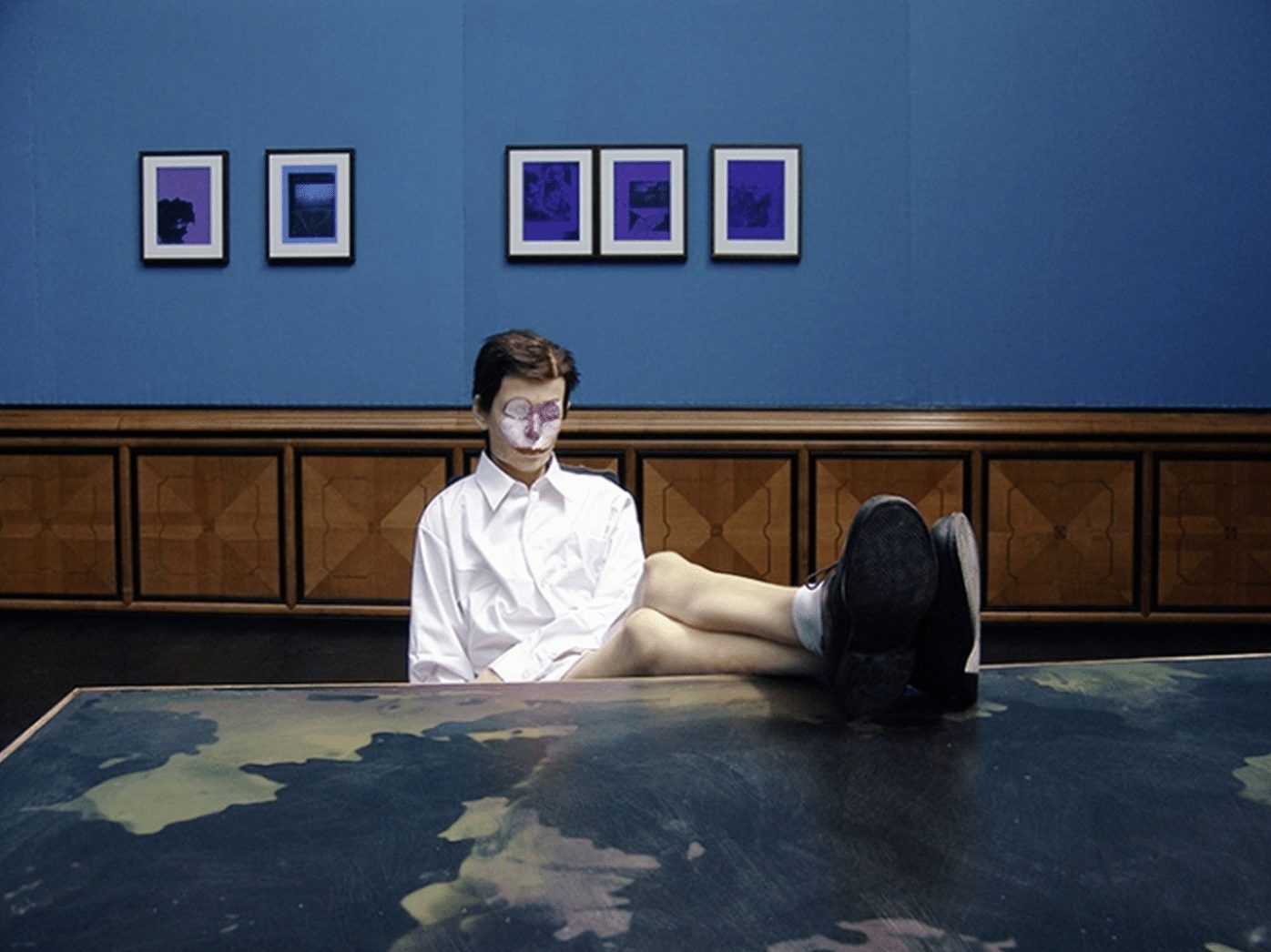
THE MACGUFFIN
Every text I’ve read about Wekua points to his tragic personal history as a lens through which to read his work. In 1989, Abkhaz nationalists, who would later claim the region in which Wekua grew up, assassinated his father, a noted Georgian political activist. Anticipating the civil war that followed, his family relocated to an uncontested area in Georgia – and then, eventually, Europe – never to return.
Although reading Wekua’s practice as being intertwined with the trauma of exile feels Freudian and reductive, it is tempting to follow considering that Sukhumi (the city of Wekua’s childhood) is the most explicit theme in his work. Once a thriving tourist destination during the Soviet era, Sukhumi is now a disintegrating ghost town. It has been left half-abandoned by the citizens who were forced to flee during the armed conflict that took place there in the early 1990s. It is the semi-fictional zone in which many of Wekua’s explorations take place, a ruin pictured from across a massive gulf of space and time.
In Pink Wave Hunter (2011), Wekua used photos that he acquired through the Internet and fellow exiles to create mixed-media replicas of buildings in Sukhumi. To account for areas of the buildings that he could not see in the photographs, Wekua left smooth and featureless segments in his sculptures. The visual effect is haunting, as though the buildings were frozen in a state between disappearance and becoming. As we speak about the project, I compare it to a buffering glitch in a 3D videogame. Wekua compares it to an abandoned set from an old Western film, the cardboard facade of a deserted Main Street. He tells me that Sukhumi was not yet visible on Google Maps at the time when he took on the project, and that, even today, there is no Street View, only satellite images. I imagine him pouring over pixelated aerial photographs of the place where he spent his childhood, squinting in search of details, marooned in a space that even the web’s largest databases cannot deliver from abstraction.
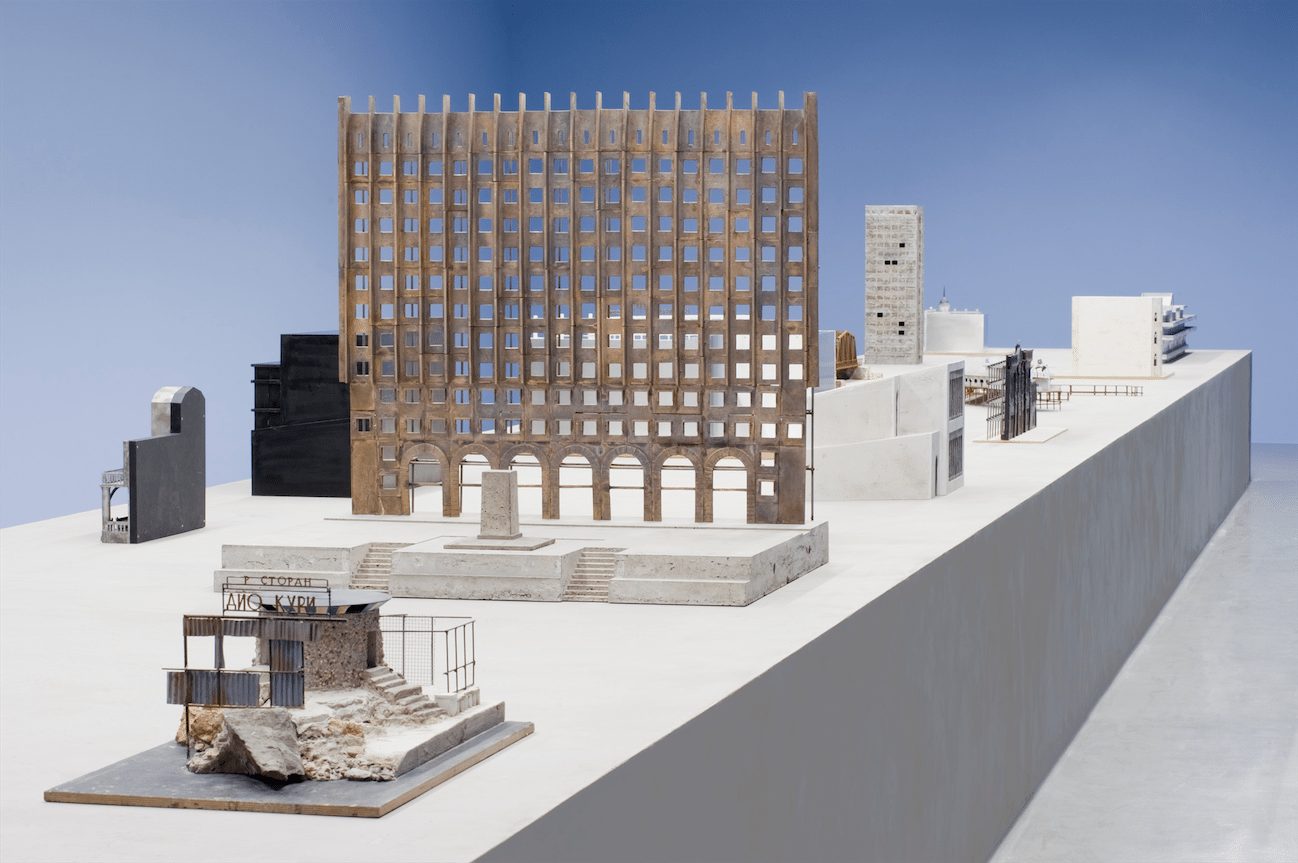
Wekua’s stylistic approach is centered upon these areas of inaccessibility. His visions read as corrupted transmissions, fractured into bits and pieces, floating in a sea of static. Wekua has a command for the drama of absence. He uses blank space to stand in for fissures in time and memory, building an atmosphere of longing and desire. Composed as such, his visual arrangements operate through the logic of the black box – through the alluring non-presence of masked faces and partially obscured representations.
While blankness gives Wekua’s phantasmagoric visions a stage, it also allows him room to embellish. Wekua opens his laptop and shows me a film he made entitled Never Sleep with a Strawberry in Your Mouth (2010). The video opens with the camera tracking towards a model of a city by the sea. I recognize the city’s buildings from Pink Wave Hunter, and ask Wekua if it is another historical recreation of his hometown. Wekua tells me the miniature metropolis is not a faithful recreation of Sukhumi, but rather an amalgamation of memory and fantasy. “This landscape is about ten percent based on something real,” he says. “The other 90 percent is just detail that I made myself.”
In Never Sleep with a Strawberry in Your Mouth, Sukhumi appears as the skeleton of larger fantasy. The camera zooms into the city, and we find ourselves in a setting that looks much like one of Wekua’s installations. A mannequin-like family ambles around an apartment filled with blasts of orange-red light. Eventually, they are visited by a humanoid monster who conjures himself out of thin air. Assembled around the dinner table, the featureless faces of the family remain still at the sight of their new guest, as though his arrival was inevitable. Strangeness is welcome in this place, almost expected. It is a scene far-flung from any semblance of a historical reality.
To describe Wekua’s artificial zones – the space of this “other 90 percent” – as autobiographical allegories would be to remain boxed in by verisimilitude. Formed at a distance through the use of memories, dreams, and search engines, Wekua’s Sukhumi is not an archeological site of investigation. It is not even a place one can visit. Instead, it looms somewhere else.
What do you think it would be like to see Sukhumi in real life again? Do you wish you could go there?
Yeah, I don’t know. I’ve never been back to that place. It’s not possible now, because they’ve closed the border. But if it one day were possible, I would have no interest. I have no real interest to see it – because, in the end, it’s not about that. There’s just no reason that guides me to do these things. It’s not political. It’s not a comment. It’s not historical. So if I go back to see it, that’s it. That’s all that it is – nothing more than that. It would be boring.
Hearing Wekua say this, it becomes clear that this city – his supposed site of exile – is a place that no longer exists. It is a destination without the possibility of arrival. In that sense, it reminds me of what Jacques Lacan calls the objet petit a, or what Alfred Hitchcock more playfully described as the “MacGuffin.” In the plot of a film, the MacGuffin is an unattainable object of desire that serves as the plot’s prime motivation. It is the room filled with ancient treasure, the briefcase carrying stolen diamonds, the dossier of top-secret files. As viewers, we follow the characters as they tempt fate, chasing the MacGuffin through winding strings of obstacles. We root for them to reach it. We even come to desire it ourselves. And yet, as we watch them turn the key, we realize what we must have always known: There is nothing inside. There is no treasure. There are no diamonds. No documents. The box is empty. We’ve arrived at a black hole.
DARK MATTER
Although it may seem like a cruel disappointment, the MacGuffin only works by virtue of its own emptiness. Much like gravity, absence pulls us towards vacuums, subjecting us to unaccountable forces. Astronomy tells us that 85 percent of the universe is composed of something called “dark matter,” so named because it is impossible to discern anything about it. Although it is invisible, the existence of dark matter can be hypothesized through the effects it has on what we can see. It is a force without a body.
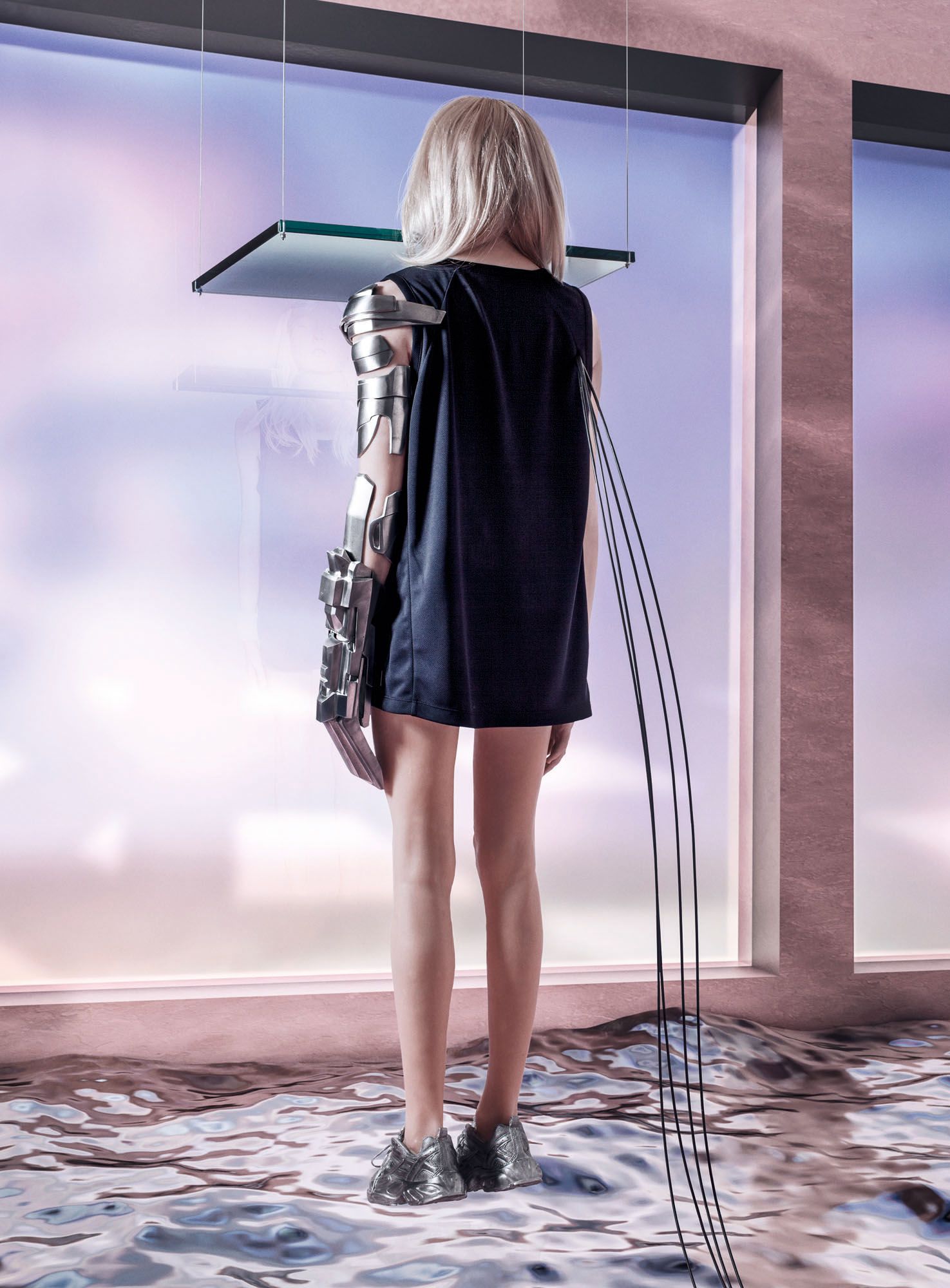
Wekua’s most recent artist’s book, GEMS SURVEY (2014), is an archive of found images named after the Galaxy Evolution Multi-Wavelength Study, a technique wherein astronomers can create hazy pictures of entities that sit light years away from Earth. Inset on blank, grey pages, the images of Wekua’s GEMS SURVEY range from digitally rendered dolphins, to sunsets, to snapshots of ruins in Sukhumi. Presented alongside actual GEMS images from the Hubble Telescope and ASC Camera, all of these documents appear to stand at an equal distance. They are all in front of us on the page, yet impossibly far away.
How did you get interested in GEMS images?
I love everything about space. It has always been very interesting for me. I think about it in one big sense as what I am doing with my small things. Things are held together with all this blurry material, which we cannot see or measure. That’s interesting for me, how I approach these empty, in-between spaces. Without them, there would be nothing to connect it all together.
What draws you to these immeasurable spaces? Is it the thrill of mystery? Or are you searching for something there?
It is not really about mystery. I just feel that it exists, a lot – in me and everywhere around. Maybe there is nothing mysterious about it. You cannot explain it, but you can work with it.
The opacity of Wekua’s work is not a ruse. Although it may seem like a black box created for the purposes of its own appeal, it simply operates in a space that evades description. His work is the product of an empirical endeavor – one that traces the invisible tissue that strings together what can be known. Yet, while this material cannot be discussed with words and symbols, it has a presence that can be felt. It appears through dreams and memories, but it is not solipsistic. Wekua charts a space that exists around us, looming outside of the network yet somehow integral to it. It is the beige grid the pops up on blank spaces in the GPS, the memory that cannot quite be downloaded, the edge without a corner. It is everywhere, and it is almost everything.
Doctor Wollwert
As I am leaving Andro Wekua’s studio, he promises to email me the telephone number of a German chiropractor. During my visit, he notices that I have been limping. I notice that he has been too. I tell him that I slipped in the rain, that it’s probably a sprained ankle. He tells me that his knee hurts, but that he’s not exactly sure why.
As you get older, how does your relationship to these teenage characters change? How does your memory of this city you haven’t been to in 25 years change?
Maybe if it changes, I’ll quit working. But, for now, I’m stuck with it.
Credits
- Interview: Thom Bettridge
- Photography: TILL JANZ
